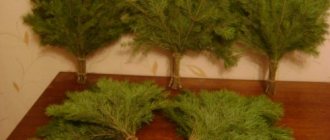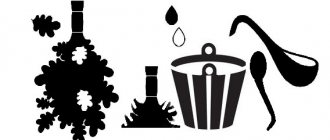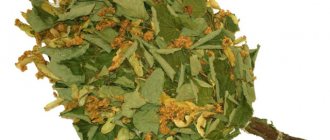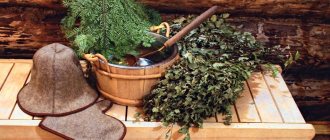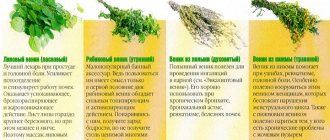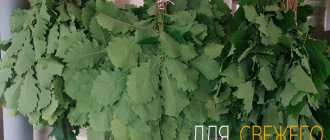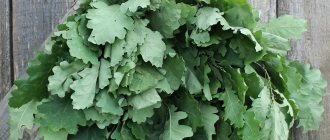A fir broom contains a lot of useful substances, strengthening the immune system, but if steamed incorrectly, it quickly sheds its needles. You need to know the subtleties and nuances of preparation, storage and use in the bathhouse in order to get the maximum benefit.
A fir broom is not only an incredible aroma in a steam room, but also a storehouse of useful substances that, when in contact with the skin and respiratory organs, help strengthen the immune system.
Several trips to the bathhouse with such a broom in winter and no respiratory disease can be overcome, because fir contains aromatic oils, which, when inhaled, cleanse the mucous membranes and strengthen the body’s natural defenses.
You need to know how to not only properly prepare and store a fir broom, but also how to steam it. This has its own nuances that will allow you to turn a visit to the bathhouse into full-fledged physiotherapy.
Useful properties of fir broom
Fir is a conifer whose needles and bark contain a huge amount of aromatic oily substances. It has been scientifically proven that oils contain phytoncides - special components that can suppress the growth and development of pathogenic flora at the cellular level.
This applies to all conifers, but fir and spruce contain the maximum content of such oils.
When steamed, a fir broom releases resinous components and oils, which have a whole range of positive effects on the body:
- Normalizes sleep, relieves anxiety, depression, psycho-emotional instability. Excellent treatment of chronic migraines without medications.
- Calms the nervous system, suppresses aggression and fights hyperexcitability.
- Strengthens the immune system, helps fight pathogenic microorganisms in the respiratory tract.
- Stimulates active phlegm discharge, which is especially important in the presence of chronic forms of bronchitis.
- Helps in the fight against viral, fungal and bacterial infections on the skin. Soothes delicate skin, heals trophic wounds, helps in the treatment of psoriasis and eczema.
- Helps cope with muscle pain and spasms in athletes.
- It has a muscle relaxant effect, normalizing blood pressure and pulse.
- Eliminates severe joint pain, suppresses inflammatory processes.
Fir has a general strengthening effect, therefore it is widely used in the bath during the period of respiratory diseases. Essential oils cope with acute respiratory infections no worse than modern medicines.
Note! If you have an individual intolerance to fir, there is a possibility of developing an allergic reaction, which manifests itself in the form of swelling of the mucous membrane of the respiratory system and eyes, and is also accompanied by itching and irritation of the skin.
Features and rules of procurement
The main disadvantage of a fir broom is the fact that when dried it is rather poorly stored. Like all conifers, fir sheds its needles when they dry out completely. Therefore, experts recommend preparing a broom a week before using it. You can also take freshly cut branches, which are no worse in their properties and qualities.
So, if you are planning a trip to the bathhouse and there is a need to prevent respiratory diseases, we go for fir. We form the broom as follows:
- We choose a relatively young and healthy tree - the branches should not show signs of damage, shedding or fading of the needles. Branches with good fine branching and richly colored needles are suitable for a bathhouse.
- We cut the side shoots by 30-40 cm - this length is quite enough, and 3 branches are enough to form one full-fledged broom. They are easy to cut with sharp pruning shears.
- We lay the branches so that the edges are wrapped inward.
- We pull it together at the base and braid it with a rope, helping ourselves with a block or pencil.
- We hang the broom vertically.
When preparing the workpiece, you must adhere to the following rules:
- Branches should be cut from trees that grow far from highways and industrial enterprises, since toxic components can easily accumulate in the needles, which will certainly penetrate the body.
- The summer cut is distinguished by the softness of the needles, but closer to winter the needles become tougher and prickly. This is important to consider when steaming, or more precisely the time of steaming the broom in the bath before use.
- Weather and time of day do not play any role, since the broom in fact does not need drying and storage.
With proper storage and care of the preparation, the shelf life of the broom will barely reach a month. After this time, the needles will safely fall off, and you will have to go to the bathhouse with sticks. If fir grows nearby, then you need to harvest it the day before going to the bathhouse. This is not a tree that needs to be dried and stored properly.
Before cutting branches, pull them firmly. If the needles have not fallen off, this is a good tree that can be used to form a broom. When the needles have partially fallen off, it is better to look for another option. Perhaps the fir is infected or experiencing a deficiency of nutrients, which manifests itself externally.
Contraindications
In principle, visiting the steam room is not allowed for everyone. In some conditions, a bath will do more harm, even if you steam a fragrant fir broom and follow all the rules of active massage. In particular, procedures should be abandoned if:
- diabetes mellitus;
- heart failure;
- hypertension;
- tuberculosis;
- inflammatory diseases of the genitourinary system;
- pregnancy.
You can steam a fir bath broom only if there are no wounds or abrasions on the skin. Massage procedures in the steam room cannot be performed in case of infectious diseases of the epidermis.
Conditional contraindications for the bath also include alcoholic drinks and rich fatty foods. You need to steam a broom and go into a heated room while sober and a certain time after eating.
Is there an allergy from a fir broom?
Steaming fir for a bath is not always useful. For some people, the pine aroma causes severe allergies, and a negative reaction can occur directly during the steaming process. Redness of the skin when treated with a broom in a bath is a completely natural and inevitable phenomenon. But if the redness is accompanied by a characteristic rash, the eyes begin to water, a runny nose and swelling of the mucous membranes occurs, we can conclude that we are talking about an allergy. In this case, the procedure should be stopped and the fir branches should not be steamed in the future.
Is it possible to store a fir broom?
If fir does not grow in your area or there are no good trees nearby suitable for harvesting, then all available raw materials need to be somehow preserved, knowing that the fir easily sheds its needles after completely drying out. What do professionals say about this? Here are some tips:
- In order for a fir broom to be stored for more than 5 months, it should be placed in a cold and relatively humid room. The ideal option is a cellar, where the branches can be periodically sprayed with a spray bottle.
- You can put the cut in water and then change it every 3-4 days. You should also add 1 drop of hydrogen peroxide to the water, then the fir will receive nutrition and continue to accumulate nutrients in the needles.
- The broom will feel great hanging in the attic. The main thing is that there are no sudden changes in temperature.
Some people, for whom a fir broom is a valuable heirloom, want to preserve it after use by sending it to dry. This should not be done, since there will be practically no benefit from reusing the broom, and the needles will begin to fall off within a few days. If this question persists and you want to save the broom for another 2-3 times, use the following tips:
- After use, the broom should be rinsed under warm running water and gently shaken to remove excess moisture.
- Hang the broom in the dressing room until completely dry, then take it out to a cool room.
Advice! If the needles have darkened, and the broom itself is losing an unpleasant musty aroma, then most likely the fir is damp. It is not recommended to use such a broom, as it will do much more harm than good.
Eucalyptus
Before storage, the eucalyptus broom must be dried. Drying it is done in the same way as with other types of brooms. For this purpose, choose a dark, ventilated place where there is no direct sunlight and high temperature.
The branches need to be tied, create a handle and hang them from the ceiling or on the wall of the room. When choosing the second option, it is necessary to constantly turn the products over to ensure even drying and to eliminate the possibility of rotting.
Eucalyptus must be stored very carefully, as its branches are characterized by increased fragility and brittleness. The best storage location would be an inaccessible, lockable room.
How to steam a fir broom correctly?
Our task is to create such microclimatic conditions under which the fir would give up nutrients without shedding its needles, otherwise steaming in bare branches will not bring any pleasure. Let's look at 3 methods that have been tested by time and by bathhouse attendants with many years of experience in this field.
Broom for delicate skin
In order for the needles to steam and be as non-prickly as possible, you need to:
- Soak the broom in warm water for 30 minutes.
- Place the swollen broom in a bowl of hotter water for another 30 minutes.
- Before use, hold for 1 minute over oven steam.
This method will protect the needles from shedding, and will not leave unpleasant streaks and marks on the skin from the effects of pine needles.
Advice! You can add a few drops of lavender and lemon essential oils to the water, which will enhance the effectiveness of the bath.
Quick steaming
The broom will be ready in 15 minutes. To do this, you need to put it in hot water (no more than 70 ℃) for 5 minutes, then hold it over steam for a minute. Repeat the procedure 3 times. The broom is ready. This method is good when you need a broom urgently, but a trip to the bathhouse was not planned.
In this case, you do not need to dip the fir broom in boiling water. This will not have any effect on the speed of its steaming, but the opposite effect in the form of dropping needles will not be long in coming.
The most useful option
This method will allow you to preserve the maximum benefits in the broom, since it is not affected by high temperatures, which contribute to the destruction of nutrients in essential oils. The sequence of actions is as follows:
- The broom should be soaked in cold water for 3 hours.
- Dip the broom into warm, but not hot water, and hold it over the stove for 10-15 seconds.
- Repeat steaming 3-4 times, after which the broom is completely ready for use.
Some bath attendants soak fir brooms overnight. This method can also be used, but when steaming over a heat source you need to be extremely careful, since there is a risk that the swollen needles will simply fall off from the steam.
Manufacturing process
A fir broom is made from pine needles collected in sunny, dry weather. Branches whose length does not exceed seventy centimeters are suitable for these purposes. The thickest of them are placed inside the future product, surrounded by thinner twigs. It is important to ensure that the curved edges of the shoots are facing the broom. There should be no knots or small needles in the place where the handle is supposed to be placed.
During the knitting process, the branches must be placed so that you end up with a flat broom. At the end, the assembled bundle should be tied with twine or any other strong rope. This should be done in the place where the broom handle is located. Then all that remains is to trim the ends of the fir branches and wrap the handle with a bandage or cloth.
Those who do not have the opportunity to make a full-fledged fir broom can be recommended to use oil obtained from the needles of this plant. It is extracted from spruce branches using a special apparatus. At the same time, from a two-hundred-liter barrel tightly packed with fir branches, you can get only one and a half liters of oil.
How to steam a fir broom without need?
It is not recommended to use a method with a temperature difference as steaming. If this approach is ideal for oak or birch, coniferous brooms will immediately “express their displeasure” in the form of dropped needles.
If you first soak a broom in cold water and then quickly transfer it to hot water (or hold it over a hot stove), due to the temperature difference, the needles will quickly move away from the branches.
Also remember one important point: essential oils are destroyed at high temperatures, so we are not talking about any boiling water. You should also not steam the broom over steam. Warm water in the basin will be enough to help the nourishing oils come out.
There is also no need to steam the broom for a long time. If you keep it in water for more than 15 minutes, the needles will begin to absorb excess water, which, when vaping, will lead to their rapid shedding.
Errors
The most popular mistakes:
- Collecting twigs in the second half of summer, early autumn.
- Drying leaves in sunlight.
- Improper storage of finished products in rooms with high humidity levels.
To enjoy the bath procedures, you need to take care of choosing or making your own broom. You can make a bunch of fir. It has elastic, durable branches that can withstand heavy loads and are not destroyed by moisture or constant temperature changes.
Sources
- https://AgroGnom.ru/flowers/raznoe/pihtovyj-venik-dlya-bani-polza-i-vred-pravila-ispolzovaniya-i-hraneniya.html
- https://banyaspec.com/poleznoe-o-bane/kak-zaparit-pikhtovyy-venik-dlya-bani-sovety-po-ispolzovaniyu.html
- https://sauna-aivengo.ru/veniki/pihtovyj-venik.html
- https://banya10.ru/aksessuary/kak-zaparivat-pihtovyj-venik.html
- https://sauna-top.ru/aksessuary/pihta-dlya-bani.html
- https://v-banyu.ru/kak-zaparivat-pihtovyj-venik.html
- https://o-vannoy.ru/veniki/pihtovye/
- https://VenikiBeniki.ru/kogda-zagotavlivayut-pikhtovye-veniki-dlya-bani
- https://probani.guru/zdorov/pihtovyj-venik/
- https://stroy-podskazka.ru/veniki/pihtovyj/
Five “NOT” for a fir broom
Everyone wants to get the maximum benefit from a bathhouse by using various brooms.
Regarding fir, it is important to remember 5 important recommendations:
- Do not dry the broom in the open sun - ultraviolet radiation will dry out the needles, they will turn yellow and quickly fall off.
- Do not constantly wet the broom during storage - it will lead to the formation of mold fungi, which will quickly destroy the needles.
- Do not steam in boiling water - the branches will become bald, and essential oils with nutritional components will quickly be destroyed.
- Do not store the broom in the dressing room - excess moisture will lead to rotting processes in the needles, which will make the broom unsuitable for subsequent use.
- Do not apply force to the broom - the needles are quite sharp even after steaming, so you need to work with this tool very carefully, moving the broom in the direction of the growth of the needles.
And remember, fir brooms are not suitable for long-term storage. A fresh cut works best, as it retains the needles when steamed and releases more nutrients when heated.
Birch
A warm sunny day is used to harvest birch branches. If the humidity is high during harvesting, the leaves will rot, darken and curl, and eventually fall off.
Knitted products must be dried in a dark, well-ventilated place. An attic, barn, or balcony are suitable for this. Hanging dry.
Storage is carried out in dark places. The sun's rays negatively affect any broom, causing yellowing of the leaves and loss of aroma.
You can also store them in a box with holes for air circulation. The products are placed in a box and stored in a cool place away from sunlight.
For city residents, storing bath brooms on the balcony is popular. They are tied to a rope near the ceiling.
Questions and answers
They say that in an alkaline environment, a fir broom steams faster, is this true?
Adding soda to water is appropriate when steaming oak brooms. As for fir, it is better not to experiment with alkali, since there is a risk that it will not allow the essential oils to be released in the required volume.
Which broom will be healthier: fresh or dry?
In the case of fir - fresh. It steams faster, releases more essential oils, and is gentler on the skin.
Is it possible to burn used fir brooms in a sauna stove to enhance the aroma?
You can, but remember that pine needles produce oily esters that can settle on the walls of the chimney, accumulating soot and soot.
Is it true that fir paws with cones are more useful?
Yes, when heated, resinous substances are released from the cones, which have a pronounced aroma and have a beneficial effect on the respiratory system. True, if it gets on the skin, such a resin is quite difficult to wash off.
Previously, fir brooms were soaked in melt water, after which they steamed faster. Can this technique be used now?
Since snow in industrial areas of large cities can hardly be called safe, it is best to use purified drinking water for steaming.

